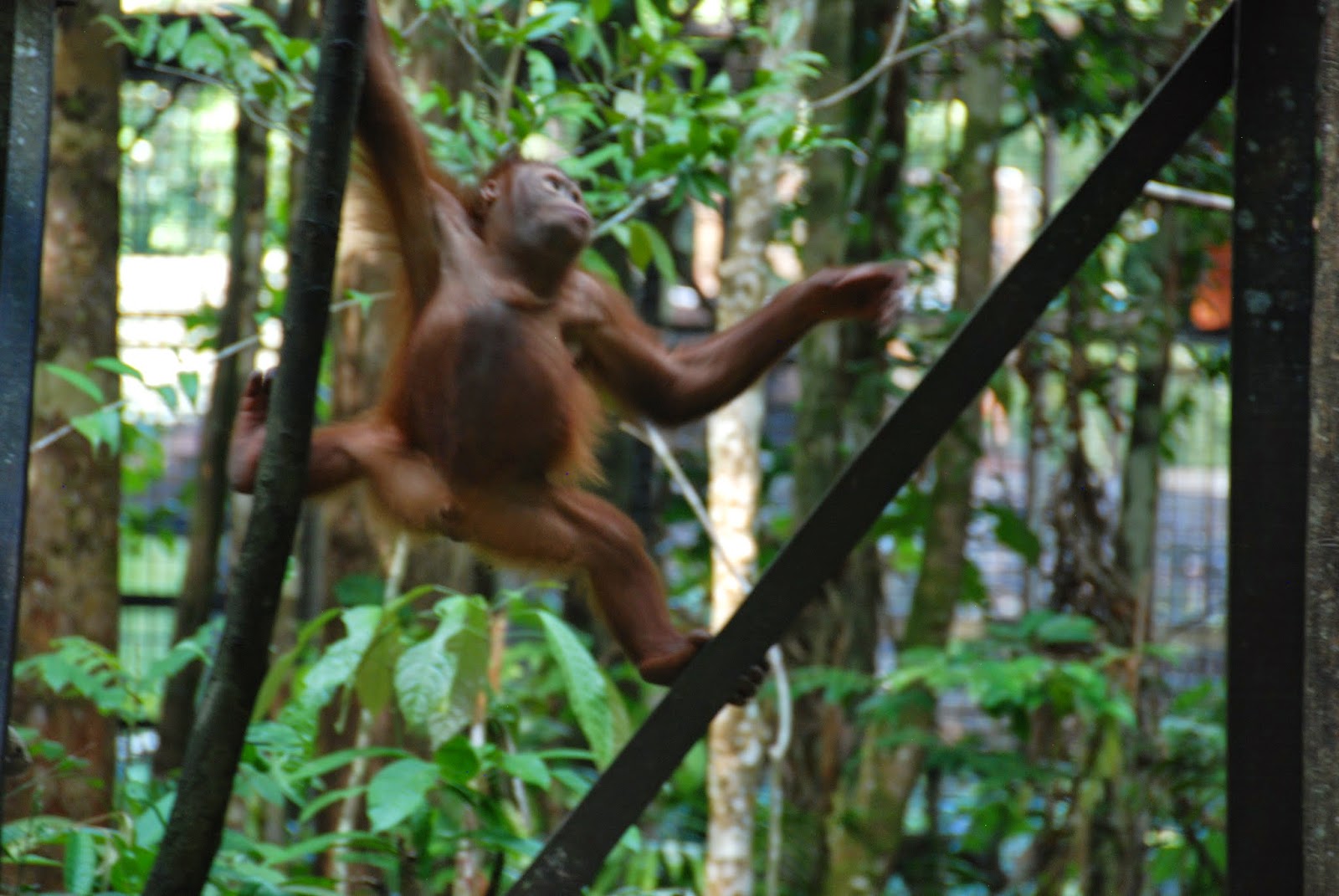Now really exited we went to the Semenggoh Nature Reserve to see semi wild orangutans. The Semenggoh Wildlife Center was established in 1975 to care for wild animals which have either been found injured in the forest, orphaned or were previously kept as illegal pets.
The orangutan is found in the rain forests of Malaysian Borneo, Indonesian Borneo and North Sumatra. And that is the reason for us to go to Borneo. We want to see the orangutans in the wild.
When we bought our tickets to enter the Nature Reserve we were told that it was not certain we would see orangutans due to fruiting season.
Fruiting season is the season of the year, where there are most food to find for the orangutans in the forest. And because of that the monkeys don't need to come to the Wildlife Center and eat the food they there can get every day at the same time.
This eating time would be the time where tourists can see them.
Orangutans are primarily fruit eaters and spend most of the day roaming the forest foraging for food. They are particularly fond of wild figs and the pungent smelling durian. Although fruit is their most important source of food they also feed on young leaves, insects, bark, flowers, eggs and small lizards.
And then we waited for the orangutans.
they never came...
Instead we saw this huge crocodile in a very little cage (sad) and a movie about the orangutans.
Because we did not see orangutans in Semenggoh Nature Reserve we went to Matang Wildlife Center.
Here the monkeys are in large cages and not in the rain forests.
The place is a rehabilitation center and this is the rehabilitation program of a new rescue:
When a rescued orangutan arrives at the Center, it is given a medical check-up and placed in a cage. The first stage of the rehabilitation process then begins. Like young humans the young orangutan have to learn how to survive in their habitat. Everyday the wardens take them to suitable places in the forest where they learn how to climb trees, swing on branches and forage for food. After two to four years they are able to fend for themselves and the goal is to release them in to the wild.
It is one of the world's largest primates, and is almost completely arboreal (tree living).
A mature male has large check pads and a pendulous throat sac.
Adult males can reach a height of 150 cm, weight up to 100 kg and have an armspan of 240 cm. Females are about three quarters of the height and half the weight of the males.
The word "orang" is Malay for "person" whilst "utan" is derived from "hutan" meaning forest. So orangutan literally translate to "person of the forest".
Orangutans have a low reproductive rate where females usually give birth to a single infant once every 7-8 years.
Females reach sexual maturity at 12 years of age, but generally don't have their offspring until two or three years later.
Males reach sexual maturity at 15 years, but their cheek pads may not fully develop until a few years later.
The life expectancy of orangutan in the wild is unknown, but is thought to be less than in captivity, where some have lived to over 50 years of age.
This baby we were told is only 1 year old.
We also saw a gibbon.
It looks really cute, but it doesn't always like tourists. It threw food after Markus. He was lucky. They told us that the monkey sometimes threw shit after tourists.
They had some hornbills.
All the animals at the center were rescued animals.
And a leopard.
We got a bonus. We spotted some big squirrels in the wild outside of the cages.
We will get back to the orangutan spotting again later on our journey. It is Carinas birthday present to see them in the wild.



















No comments:
Post a Comment